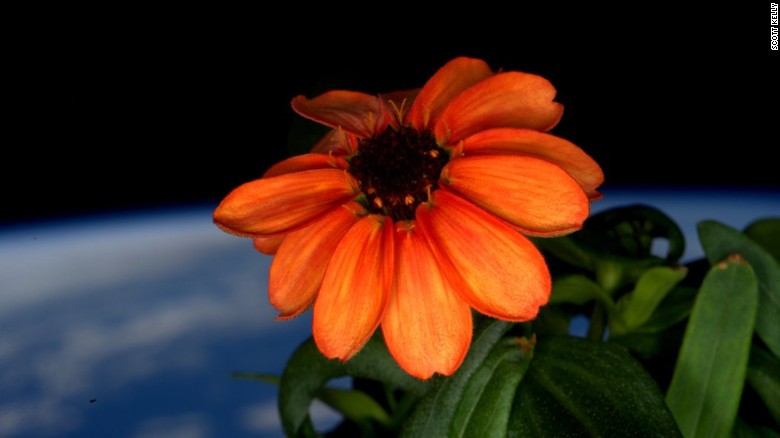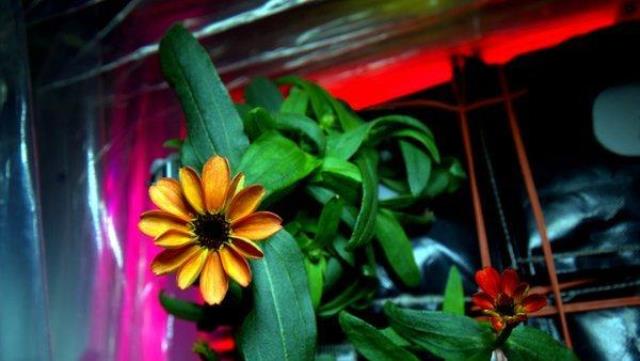First Flower Ever Grown In Space?!

To boldly grow where no man has grown before.
That has been the mission of astronauts aboard the International Space Station (ISS) for nearly two years, where they have tried to cultivate edible plants in microgravity.
But now, after a few failed growth cycles, it seems the team’s efforts are finally blossoming, with their first ever bunch of zinnia flowers blooming in space.
Scott Kelly posted a lovely little close-up of a bright orange flower to his Twitter feed on Saturday. This would be a perfectly normal and unremarkable activity for just about anyone else on Twitter. But Kelly is a NASA astronaut up on the International Space Station, and the photo he shared shows the first flower ever grown in space.
The chipper-looking bloom is a zinnia, a plant related to sunflowers and daisies. It can come in many colors, but the one on the space station is bright orange with a tinge of yellow. A small garden of the plants is growing in the VEG-01 module, an experiment focused on raising edible and ornamental plants in space.
The ultimate goal of the VEG-01 (known more popularly as just “Veggie”) is to sort out how astronauts could grow food on long-range missions, such as a mission to Mars. The ISS gets regular resupply runs from Earth, but adventurers on the way to far-off areas of the solar system won’t have that luxury.

“Yes, there are other life forms in space,” tweeted Kelly about the orange and yellow flowers.
The story of the delicate space flowers is fraught with ups and downs, similar to gardens on Earth.
Just last month, the small crop, part of the Veggie experiment on the International Space Station, wasn’t looking so good. The leaves and buds were covered in mold, because of a leak in the plant container.
“I’m going to have to channel my inner Mark Watney,” tweeted Kelly in December referencing ‘The Martian’ potato-growing survival skills.
An unplanned spacewalk delayed fixing the problem in the space garden and by December 22 they were dying, said Trent Smith, Veggie project manager. Kelly had to act quickly cutting away the moldy leaves and drying out the plant chamber.

Still, these small victories are just the beginning.
“I hope to see Veggie’s success as the first step in food production that will allow astronauts on the space station to enjoy fresh food and gain knowledge as we explore beyond low-Earth orbit,” said Brian Onate, who helped build the plant growth system before it went into space.
The Veggie project will also produce crucial information for a Mars mission, said Alexandra Whitmire from NASA’s Human Research Program. For example, understanding watering schedules in microgravity, and knowing what to do if there is mold growth or other challenges in these extreme conditions.

The zinnia is just one step in a long-term plan for gardening in space. NASA reports that future experiments will involve Chinese cabbage, red romaine lettuce (a crop already successfully grown and eaten on the ISS) and eventually dwarf tomato plants. Some day, astronauts may have access to an entire salad bar in space.
Congratulations Commander Kelly, Mark Watney would be proud.
Source: NASA.GOV

Comments are closed.